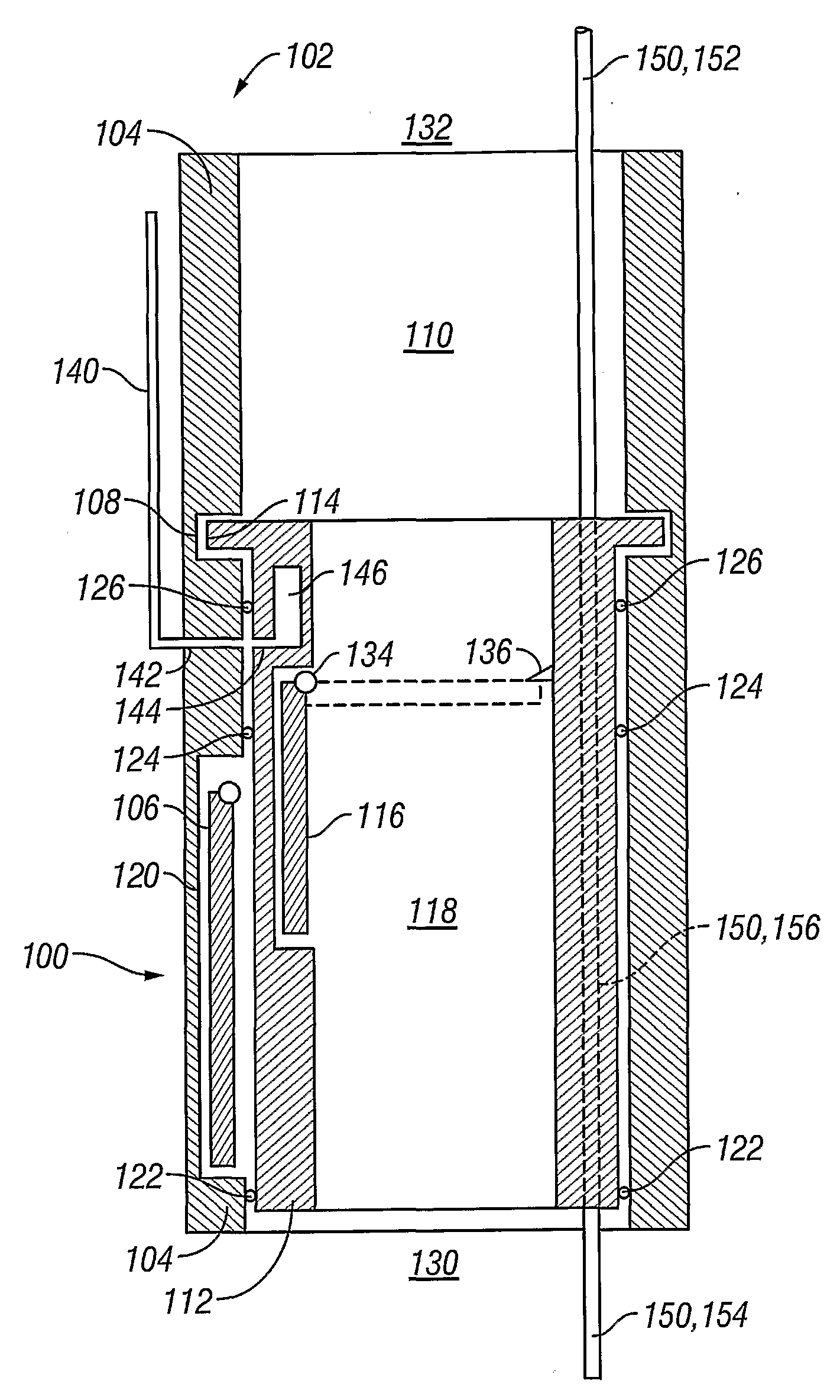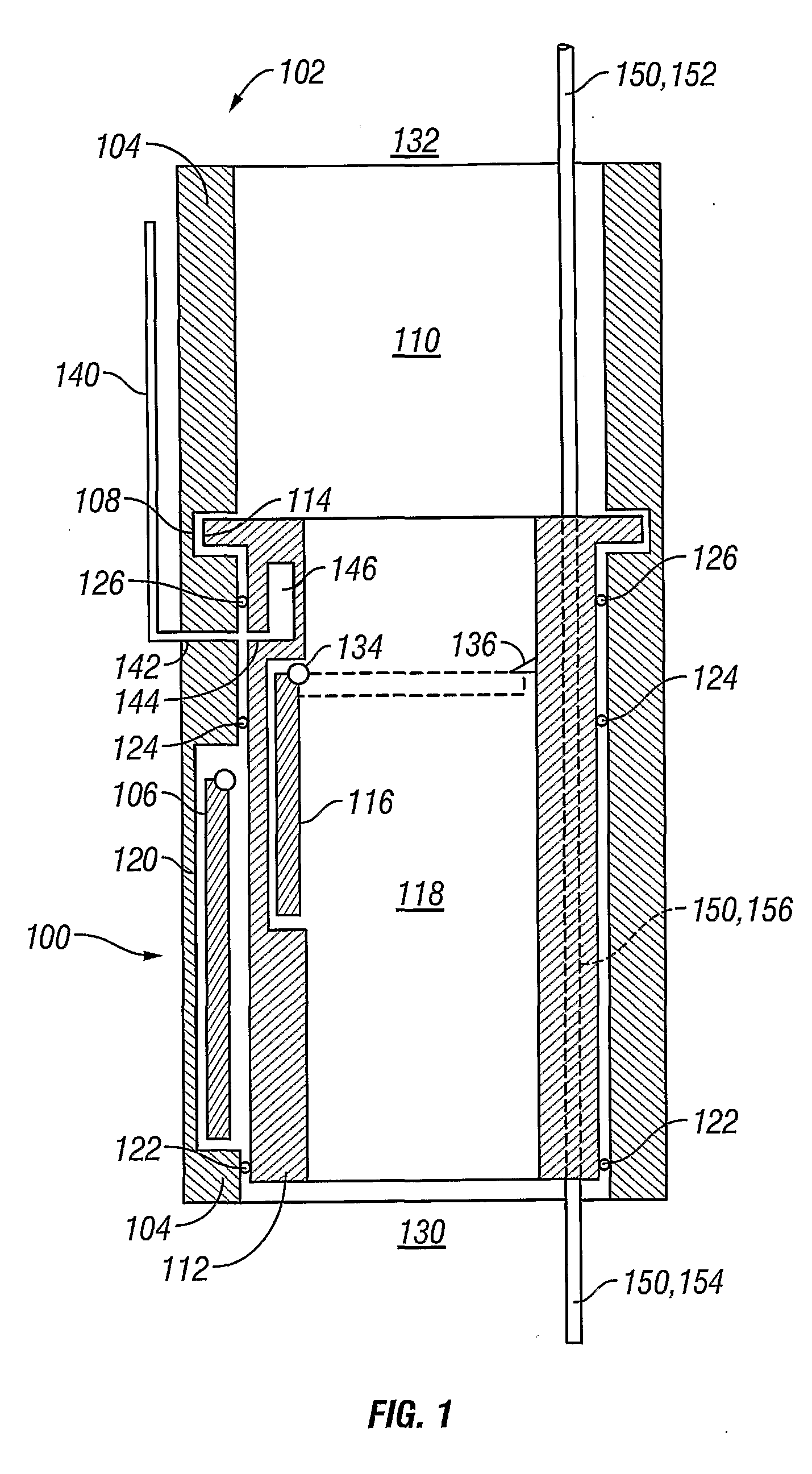Downhole Safety Valve Apparatus and Method
a safety valve and subsurface technology, applied in the direction of fluid removal, sealing/packing, borehole/well accessories, etc., can solve the problems of existing subsurface safety valves being stuck or otherwise inoperable, affecting the safety of subsurface safety valves, and causing dangerous surface blowouts
- Summary
- Abstract
- Description
- Claims
- Application Information
AI Technical Summary
Benefits of technology
Problems solved by technology
Method used
Image
Examples
Embodiment Construction
[0019]Referring initially to FIG. 1, a schematic representation of a replacement subsurface safety valve assembly 100 is shown engaged within an existing subsurface safety valve 102. Existing safety valve 102 includes a generally tubular valve body 104, a flapper 106, a landing profile 108, and a clearance bore 110. Likewise, replacement valve assembly 100 includes a main body 112, an engagement profile 114, a flapper 116, and a clearance bore 118.
[0020]With a replacement safety valve desired to be located within an existing safety valve 102, replacement valve assembly 100 is disposed downhole through the string of tubing or borehole where preexisting safety valve 102 resides. Once replacement valve 100 reaches existing safety valve 102, replacement valve 100 is actuated through clearance bore 110 until engagement profile 114 of replacement valve 100 engages and locks within landing profile 108 of existing safety valve 102. Landing and engagement profiles 108, 114 are shown schemati...
PUM
 Login to View More
Login to View More Abstract
Description
Claims
Application Information
 Login to View More
Login to View More - R&D
- Intellectual Property
- Life Sciences
- Materials
- Tech Scout
- Unparalleled Data Quality
- Higher Quality Content
- 60% Fewer Hallucinations
Browse by: Latest US Patents, China's latest patents, Technical Efficacy Thesaurus, Application Domain, Technology Topic, Popular Technical Reports.
© 2025 PatSnap. All rights reserved.Legal|Privacy policy|Modern Slavery Act Transparency Statement|Sitemap|About US| Contact US: help@patsnap.com


